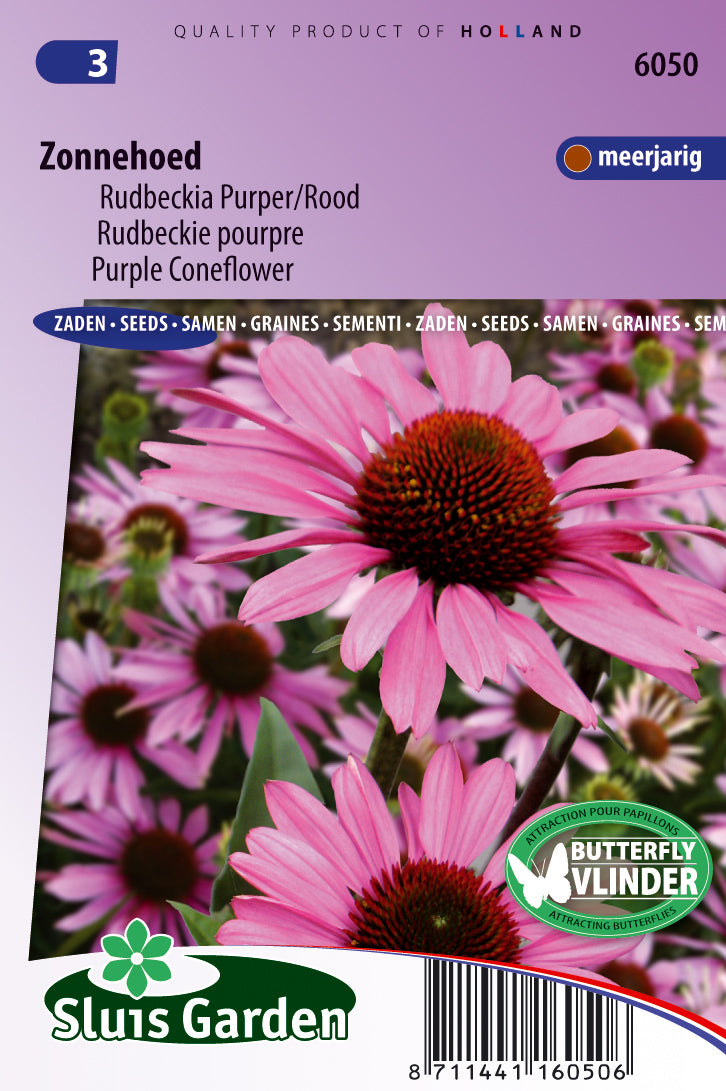1
/
of
1
Rudbeckia purpurea
Rudbeckia purpurea
Regular price
1.350 KWD
Regular price
Sale price
1.350 KWD
Unit price
/
per
Shipping calculated at checkout.
Couldn't load pickup availability
Rudbeckia purpurea, commonly known as Purple Coneflower or Purple Coneflower Rudbeckia, is a perennial plant native to North America. It produces attractive daisy-like flowers with purple-pink rays and a brownish central cone. Here's a guide on how to grow Rudbeckia purpurea:
**1. Planting Time:**
- Plant Rudbeckia purpurea seeds or seedlings in the spring or fall. This allows the plant to establish itself before the extremes of summer or winter.
**2. Soil Preparation:**
- Choose a well-draining soil with a slightly acidic to neutral pH. Rudbeckias are adaptable to various soil types but prefer moderately fertile soil.
**3. Sunlight:**
- Rudbeckia purpurea prefers full sun but can tolerate partial shade.
**4. Watering:**
- Water regularly to keep the soil consistently moist during the plant's establishment phase. Once established, Rudbeckias are relatively drought-tolerant.
- Water at the base of the plant to avoid wetting the foliage.
**5. Spacing:**
- Space Rudbeckia purpurea plants about 18 to 24 inches apart to allow for their mature size and to provide good air circulation.
**6. Mulching:**
- Apply a layer of organic mulch around the plants to help retain soil moisture, suppress weeds, and regulate soil temperature.
**7. Fertilization:**
- Rudbeckias are not heavy feeders. A balanced, slow-release fertilizer applied in early spring should be sufficient. Avoid over-fertilizing, as this can lead to excessive foliage growth.
**8. Support:**
- While Rudbeckia purpurea typically doesn't require staking, some taller varieties may benefit from support, especially in windy conditions.
**9. Deadheading:**
- Deadhead spent flowers regularly to encourage continuous blooming and prevent self-seeding if you want to control the spread.
**10. Pruning:**
- Cut back the plant in late fall or early spring to remove dead foliage and encourage new growth.
**11. Division:**
- Every few years, consider dividing mature clumps to maintain their vigor. Division is typically done in early spring.
**12. Pests and Diseases:**
- Rudbeckias are generally resistant to pests and diseases. However, watch for aphids and spider mites, and treat infestations promptly.
**13. Wildlife Attraction:**
- Rudbeckias attract pollinators, such as bees and butterflies, making them a valuable addition to pollinator gardens.
**14. Winter Care:**
- Rudbeckia purpurea is a hardy perennial. In colder climates, the plant will die back in winter and re-emerge in spring.
By following these guidelines, you can successfully grow Rudbeckia purpurea and enjoy its vibrant flowers in your garden. Adjust your care routine based on your local climate and soil conditions.
**1. Planting Time:**
- Plant Rudbeckia purpurea seeds or seedlings in the spring or fall. This allows the plant to establish itself before the extremes of summer or winter.
**2. Soil Preparation:**
- Choose a well-draining soil with a slightly acidic to neutral pH. Rudbeckias are adaptable to various soil types but prefer moderately fertile soil.
**3. Sunlight:**
- Rudbeckia purpurea prefers full sun but can tolerate partial shade.
**4. Watering:**
- Water regularly to keep the soil consistently moist during the plant's establishment phase. Once established, Rudbeckias are relatively drought-tolerant.
- Water at the base of the plant to avoid wetting the foliage.
**5. Spacing:**
- Space Rudbeckia purpurea plants about 18 to 24 inches apart to allow for their mature size and to provide good air circulation.
**6. Mulching:**
- Apply a layer of organic mulch around the plants to help retain soil moisture, suppress weeds, and regulate soil temperature.
**7. Fertilization:**
- Rudbeckias are not heavy feeders. A balanced, slow-release fertilizer applied in early spring should be sufficient. Avoid over-fertilizing, as this can lead to excessive foliage growth.
**8. Support:**
- While Rudbeckia purpurea typically doesn't require staking, some taller varieties may benefit from support, especially in windy conditions.
**9. Deadheading:**
- Deadhead spent flowers regularly to encourage continuous blooming and prevent self-seeding if you want to control the spread.
**10. Pruning:**
- Cut back the plant in late fall or early spring to remove dead foliage and encourage new growth.
**11. Division:**
- Every few years, consider dividing mature clumps to maintain their vigor. Division is typically done in early spring.
**12. Pests and Diseases:**
- Rudbeckias are generally resistant to pests and diseases. However, watch for aphids and spider mites, and treat infestations promptly.
**13. Wildlife Attraction:**
- Rudbeckias attract pollinators, such as bees and butterflies, making them a valuable addition to pollinator gardens.
**14. Winter Care:**
- Rudbeckia purpurea is a hardy perennial. In colder climates, the plant will die back in winter and re-emerge in spring.
By following these guidelines, you can successfully grow Rudbeckia purpurea and enjoy its vibrant flowers in your garden. Adjust your care routine based on your local climate and soil conditions.
Share

